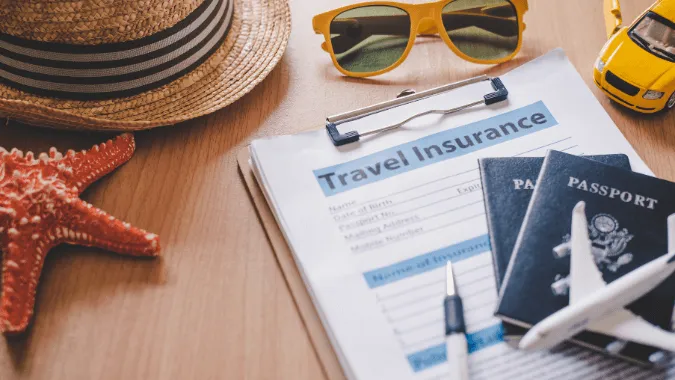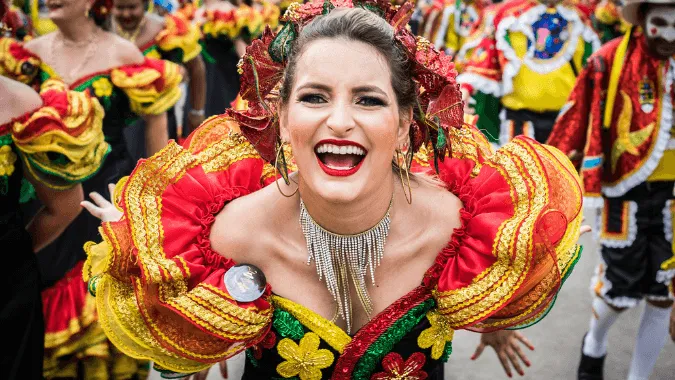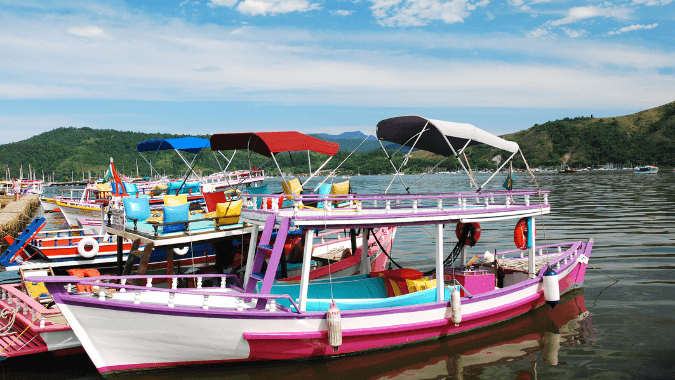Rio de Janeiro's landmarks: The Copacabana Fort
Forte de Copacabana (Copacabana Fort) is one of Rio de Janeiro's landmarks that is not so well known and for this reason, many people leave the city without even realising it exists. Those tourists who choose to wander all the way down to the end of Copacabana Beach will receive a pleasant surprise in the form of an enormous fort, complete with a military museum and one of Rio’s signature bistros. Read on to find out what they each entail.
[caption id="attachment_773" align="aligncenter" width="540"] The entrance to the Copacabana Fort / source[/caption]
The entrance to the Copacabana Fort / source[/caption] Copacabana Fort
The Copacabana Fort, which was built on the eve of World War I as Rio de Janeiro’s key defence against attack, is a large fort with thick concrete walls supporting giant cannons that were once capable of firing deadly shells up to fifteen miles out to sea. On July 5th 1922, the fort was the centre point of the 18 of the Copacabana Fort revolt, whereby the officers rebelled in turning the fort's guns back on Rio. Nowadays, you can marvel at these staggering cannons, along with several artillery pieces from the late 19th and early 20th centuries. Inside the fort, rooms full of highly advanced instruments that were used for targeting and aiming the gun turrets can be found, as well as original furniture and workshops.
[caption id="attachment_774" align="aligncenter" width="540"] View of the fort from above / source[/caption] [caption id="attachment_775" align="aligncenter" width="540"]
View of the fort from above / source[/caption] [caption id="attachment_775" align="aligncenter" width="540"] One of the immense cannons used to fire shells out to sea / source[/caption]
One of the immense cannons used to fire shells out to sea / source[/caption] Historical Army Museum
The Museu Histórico do Exército (Historical Army Museum) is home to various exhibits, enabling visitors to learn about the history of Brazil’s military. Amongst the items on display are colonial explorers in thick leather armor, uniforms belonging to the Imperial officers and medals. There is also a small display about the Brazilian expeditionary force, which sent over 25,000 Brazilians to Europe during World War II. Portraits of the various presidents of the military dictatorship hang in a dark room, as though to symbolise the dark, heinous crimes they committed against the leftist subversives in the late 1960s.
Café do Forte
Once you’ve had enough of the military side of things, you can relax in the Café do Forte, operated by Rio’s renowned Confeitaria Colombo, which serves delicious pastries, cakes and sandwiches. Even if you aren’t feeling peckish, the stunning views over Copacabana Beach and the sea should be enough to entice you to have a seat here and admire Rio’s natural beauty.
To enter the fort and the café, you must pay the R$4 entrance fee which, like most activities in Rio, is fantastic value for money.
[caption id="attachment_777" align="aligncenter" width="540"] Tasty treats at the Confeitaria Colombo Fort Cafe / source[/caption]
Tasty treats at the Confeitaria Colombo Fort Cafe / source[/caption] Useful Information
- Forte de Copacabana opening hours: Tues-Sun 10 am -10 pm (10:00 - 22:00)
- Museu Histórico do Exército opening hours: Tues-Sun 10 am - 5pm (10:00 - 17:00)
- Café do Forte opening hours: Monday to Sunday, 10 am - 8 pm (10:00 - 20:00)
For more tours and activities in Rio, head to our website.
By: Camilla Day - Content Manager
-
Exciting 4x4 route: São Luís and FortalezafromUS$1,014
-
Vila Gale Mares Resort All InclusivefromUS$100
-
Ecotourism in Chapada DiamantinafromUS$672
-
All inclusive Vila Gelé Cumbuco ResortfromUS$999
-
Full Day Cafayate Tour from SaltafromUS$68
-
Transfer Aeroparque - Buenos AiresfromUS$46
-
-
Transfer Ezeiza - AeroparquefromUS$91
-
-
Excursion to El Chaltén from El CalafatefromUS$153
-
-
-
-
-
-
-
-
-
-
-



